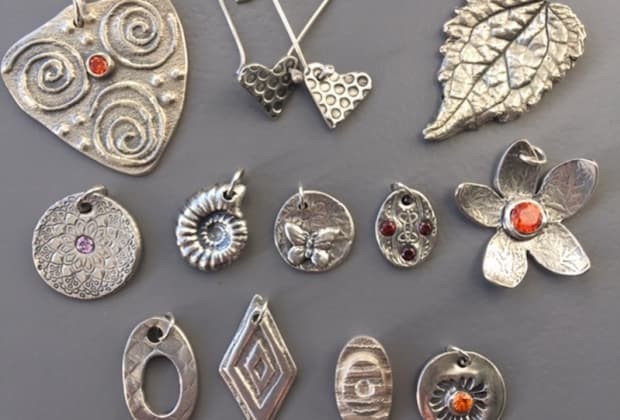Jewellery making is no easy feat. And, In this post, you will learn about the six major precious metals used in jewellery making.
These precious metals have various characteristics, and some of them are hard to shape. With this in mind, fabricated metals are available to make the task easier.
So, below are the top four metals that are normally used for jewellery making:
Silver
Sterling silver is the metal of choice when discussing jewellery. To put it another way, it is 7.5% copper and 92.5% silver.
Sterling silver is an excellent choice for jewellery as it lasts long and is suitable for necklaces, rings and necklaces, cufflinks, and belt buckles. However, without proper care, silver is more prone to tarnish than platinum, gold, or titanium, as it is a softer type of metal.
Silver-Filled
Another popular option is silver-filled metals (also known as “silver overlay”). The significance is that this wire is created by covering a cheaper metal with a layer of silver by heat and pressure.
Moreover, the silver layer is thicker than a regular plating by hundreds of times. And because it’s so thick, you can dig deeper, polish more, and even perform some light etching without exposing the underlying base metal.
Silver-filled is best for jewellery components such as ear wires and chains. It keeps them inexpensive, and they’ll endure forever and look great when coupled with sterling silver pendants.
Gold
Gold jewellery is made out of gold and metals like zinc, copper, nickel, and silver. Meanwhile, carats (ct) or karats (K) are used to measure the actual gold content.
This describes the ratio of gold to the other types of metals in the composition. Of course, the more gold content, the more money you’ll have to shell out.
Since 24K gold is soft, it would create poor jewellery. Instead, consider jewellery made from 14K gold as it is hard and easy to deal with. And if you want a more expensive piece, choose 18K gold (75% pure gold).
Pure gold’s colour is yellow, and its colour variation comes from the alloy’s non-gold metals. So, here are some types of gold:
- White gold is pure gold mixed with white metals like silver, nickel, and palladium. It has a greyish tint that has been coated with rhodium, providing a whiter appearance. On the other hand, nickel is generally avoided as it causes allergic reactions to many.
- Yellow gold is pure gold mixed with zinc, copper, and silver.
- Green gold is virtually the same as yellow gold but without copper in its alloy.
- Rose gold is a mixture of pure gold and a large proportion of copper.
These gold variations are popular options for rings, wedding bands, necklaces, and earrings.
Titanium
Titanium is the hardest natural metal, outperforming platinum, gold, steel, and silver. It’s also easy to colour, scratch-proof, and lightweight.
Moreover, titanium is a popular choice for surgical implants and body-piercing jewellery as it is entirely hypoallergenic. However, it is not a good material for rings as titanium is not resizable or solderable.
These are just some of the favourite precious metal options for modern pieces of jewellery. While most of them are easy to mould, bend, and solder, some metals are too hard to work on.
So, fabricated metals are popular among jewellery makers. Moreover, these metals have different characteristics that need to be considered aside from the jewellery’s design.










